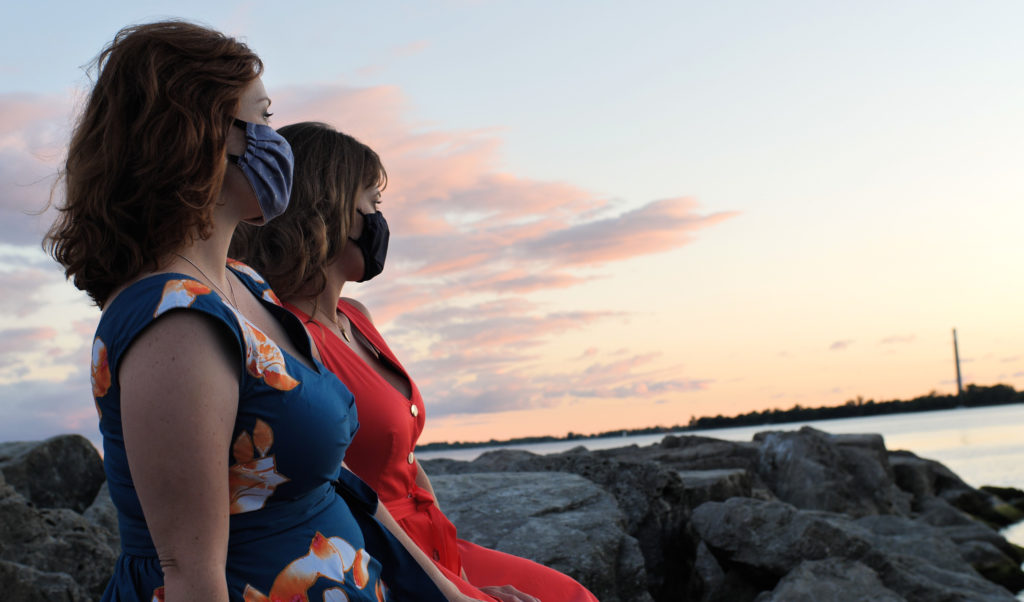Four seasons into the relentless pandemic that continues to savage opera careers and livelihoods, veteran artist manager Kathy Domoney still refuses to yield to helplessness. For the founder of Toronto’s nimble Domoney Artists agency, a respected presence on the local classical vocal scene for well over a decade, professional surrender and despair has never been an option from day one of mass COVID-necessitated theatre closures.
“We wanted to get my singers singing again,” says Domoney via phone, her voice simultaneously animated and resolute. “It’s been months of hibernating, cancellations, practicing in basement apartments trying to keep their voices fresh with no kind of goal, no kind of concert or event. It’s very hard to stay enthusiastic and engaged when you’re not singing anywhere.”
Then came a memorable encounter with American Ballet Theatre’s Sequentia. Watching on YouTube in May, the experimental dance drama co-produced by San Francisco Ballet, soloists overlapping one another in a succession of discrete improvisations, struck a responsive chord.
“It was like a chain mail letter,” Domoney enthuses. “Somehow this just captivated me. The movement. And the fact that so many of the settings where this was recorded were outside. Someone was on a beach. Someone was in a garden. Someone was in a wooded area.”
The visionary aspects of the production, not to mention the arrival of warm weather, seemed to offer a sense of precious relief, something of an emotional release from lockdown. The notion of plucking opera from the stage, isolating iconic moments, rethinking performance and music for camera and mic seized Domoney’s imagination.
“I felt a little bit like Dorothy when she opens the door to Munchkin Land.”
However much Opera Breaks may be the product of Domoney’s singular artistic sensibility, the realization is, like all good opera should be, very much the product of active collaboration between dreamers and doers. Backed by an emergency relief grant from the Canada Council, Domoney acting as both executive and line producer, the level of expertise on show, as witnessed in the brief, tantalizing trailer currently playing on several popular social media platforms, is nothing less than exceptional. Visuals, though only briefly glimpsed to date, are particularly stunning. Director of photography Stephen Bell assisted by 2nd camera Eric Moniz shoots with a meticulous sense of both lavish panoramic sweep and sensitively observed close-up gifting each of five promised introductory 3 – 4 minute episodes with a degree of style and flair rarely associated with operatic ventures seen online these days.
Though strict storytelling, according to Domoney, tends not to be a distinguishing feature of what promises to be a fresh new digital venture, high emotion and passion most obviously are. Single arias and show tunes recorded at Revolution Recording Studio in Leslieville are front and centre here. Dramatized and vividly set, singer actors appear in moments of masked reverie, director François Racine charged with crafting the sharply defined cinematic vignettes, typically guiding and advising remotely, as Domoney explains, from his home in Montreal.
“We had the audio recordings. François and I listened to them. And when he listened to them he thought about what scenes, what locations, what ideas would work with a particular duet, for instance. Where would this be kind of fun? And I would go around and take photos and he would say yes to this, no to that. And then we would put that into a storyboard to give to Stephen at Coffeeshop Creative. For two of the scenes, François was giving instructions on the ground like a stage director and the energy the singers had having him right there — it just made us all think how much we missed it all.”
Puccini’s flirtatious Quando me n’vò sung by soprano Jennifer Taverner, the first of the personally helmed Racine mini miniseries set, against expectation, in downtown T.O.’s Graffiti Alley, raises the virtual curtain. I’d Give It All for You, a deeply affecting duet from the 1990s Broadway song cycle Songs for a New World featuring tenor Asitha Tennekoon and soprano Cait Wood filmed in Yorkville Village Park follows.
Also scheduled: Tenor Ernesto Ramirez’s E lucevan le stelle captured at the Old Don Jail. Offenbach’s Belle Nuit with Jennifer Taverner and mezzo soprano Marjorie Maltais shot at Balmy Beach. Baseball diamond-singing baritones Dion Mazerolle, Jorell Williams and Clarence Frazer in the Toreador Song from Carmen. Additional selections will be released as they emerge from the production process including a surprise contribution from bass-baritone Giles Tomkins.
Opera Breaks is, quite clearly, paradigm-altering in a multitude of respects not the least of which centres on the role of the artist manager in a shattered marketplace.
“This pandemic has created a real shift in what an agency is doing,” Domoney sharply observes. “The role of the agency now is to get creative just the same as presenters are. We can’t wait the next two years for a company to be ready to hire my singers back. I need to somehow create new opportunities. It’s important to me to give the artists a platform to perform on.”
Opera Breaks shows every indication of rising to the challenge, a modest but no less impactful digital structure. A potentially game-changing internet offering, polished and innovative. A brave and valuable initiative.
* * *
The premiere episode of Opera Breaks airs Saturday, October 3rd on Instagram @operabreaks. A voluntary pay-what-you-can tip jar will be available. A new video will be released each week.


